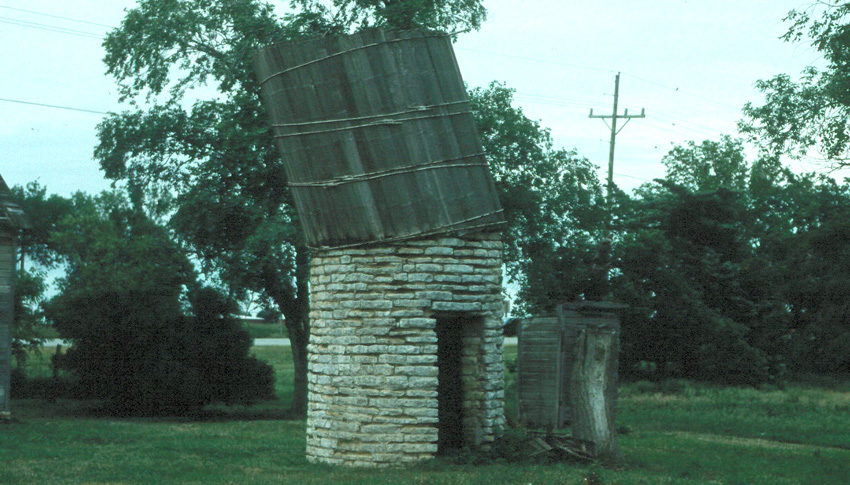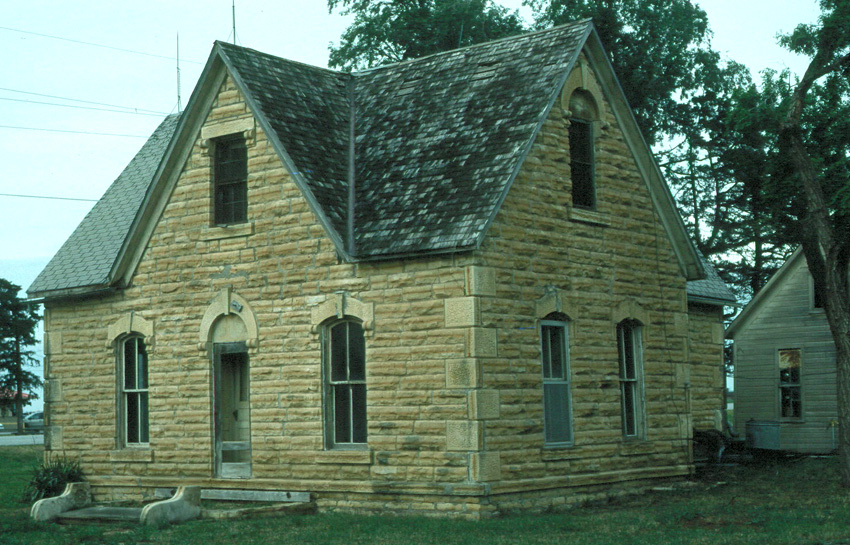The Kingdom of Limestone—Beloit, Kansas
www.stonexp.com
2010-07-15 09:47:43
Popularity Index:0
Source:Internet
|
This page of the buildings isn't about one building. Instead, it's about an entire town in north-central Kansas, where one kind of local limestone has been used to build homes, commercial buildings, churches, and the county courthouse. Let's work in that order through Beloit, Kansas, starting with a home near the center of town:  A store downtown:  . . . and another store - note the round stone windows:  . . . and another store - note the round stone windows:  . . . and St. John's Catholic church, built from 1901 to 1904 in Romanesque-Gothic style: All of these buildings and many more are built from one stone, a grainy limestone from the Greenhorn Formation, which is Upper Cretaceous in age and thus about 95 million years old. The image below shows some of it; note the clam shell amidst the small grains of fossil debris:  why all this use of one kind of stone? Across much of central and western Kansas, wood is a scarce commodity, and so builders are led to turn to other materials. Beloit sits in the middle of the outcrop belt of the Greenhorn Limestone. To the west of this belt, the Greenhorn is covered by other layers of rock, and to the east, it has been eroded away. In Fact, what geologists would call the outcrop area of the Greenhorn Limestone is known more generally as the "Stone Post Country" or "Post Rock Country". Pioneers in this region recognized that slabs of the Greenhorn could replace fenceposts that are more conventionally made of wood, and so one can track the Greenhorn outcrop belt simply by looking at the posts of the farm fences:  Today, fences and stone posts are both going out of style. However, the stone posts are being recycled for landscaping, and some are carved to become house markers like these in Beloit.  Both of these pieces of Cretaceous limestone bear the image of the sunflower, the state flower of Kansas, and are a reminder of the extensive use of a convenient stone in a part of the world where wood was scarce.
|





